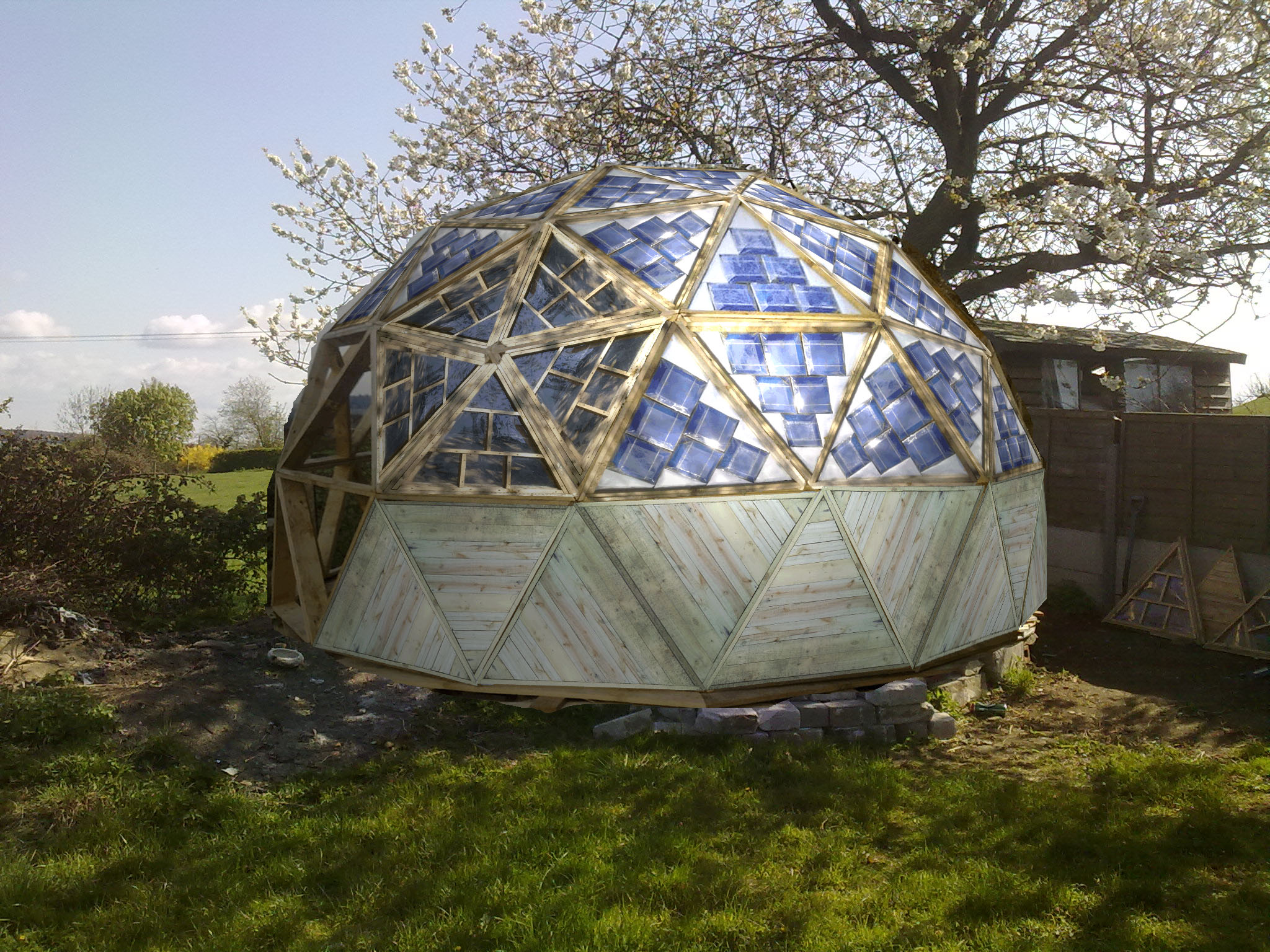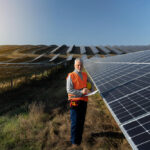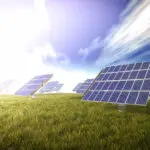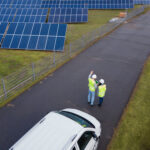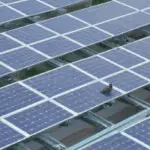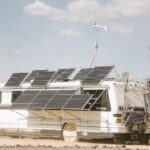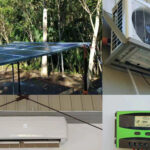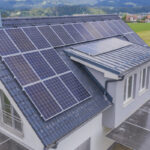In the ever-evolving landscape of renewable energy, technological innovations continue to shape the efficiency and aesthetics of solar panels. Triangular solar panels have emerged as a novel and intriguing design, promising unique advantages over their conventional rectangular counterparts. In this blog, we delve into their features, pros and cons, comparisons, worthiness, and future potential. We’ll also explore the various types of such solar panels that are making waves in the renewable energy sector.
Features of Triangular Solar Panels
Triangular solar panels represent a departure from the traditional rectangular panel layout. These panels are characterized by their geometric shape, resembling equilateral triangles when viewed from above. One of the most distinct features of triangular panels is their ability to maximize solar energy capture throughout the day due to their dynamic orientation.
- Dynamic Orientation: Unlike rectangular panels that are usually fixed at a certain angle, triangular panels can be adjusted to follow the sun’s path across the sky. This feature ensures optimal exposure to sunlight at all times, leading to increased energy production.
- Modularity: Triangular panels can be easily interconnected to form larger arrays. This modularity allows for greater flexibility in installation, enabling solar farms to adapt to various terrains and available spaces.
- Aesthetic Appeal: The unique geometric design of triangular panels often blends harmoniously with modern architectural aesthetics. This makes them an attractive choice for both residential and commercial installations.
- Wind Resistance: Triangular panels are inherently more wind-resistant compared to their rectangular counterparts due to their reduced surface area exposed to the wind. This can lead to enhanced durability and longevity of the panels.
Types of Triangular Solar Panels
Several types of triangular solar panels have emerged, each with its unique design and features:
Bifacial Triangular Panels
These solar panels are designed to capture sunlight from both the front and back sides, increasing their efficiency in energy production. These panels have a clear backing sheet that allows light to pass through and be absorbed by the photovoltaic cells on the rear side. This feature enables the panels to generate electricity from indirect sunlight, such as reflected light or diffused light, which would otherwise be wasted. Bifacial triangular panels can produce up to 25% more energy than traditional solar panels, making them an excellent choice for locations with high levels of indirect sunlight.
Dual-Axis Tracking Triangular Panels
Dual-axis tracking solar panels are equipped with tracking mechanisms that allow them to follow the sun’s daily path and seasonal variations. These panels can tilt and rotate to optimize energy capture, ensuring maximum exposure to sunlight throughout the day. The dual-axis tracking system improves energy output by up to 45% compared to fixed solar panels, making them ideal for locations with diverse weather patterns. The triangular shape of these panels further enhances their ability to harness sunlight from different angles.
Integrated Building-Integrated Photovoltaics (BIPV)
Building-integrated photovoltaics (BIPV) are designed to be an integral part of a building’s structure and design. These panels serve both as energy generators and design elements, providing a unique opportunity to combine functionality and aesthetics. Integrated BIPV systems can replace traditional building materials like roofing, walls, and windows, reducing the overall weight and cost of construction. Triangular BIPV panels can be customized to fit various architectural styles, creating a seamless integration between the building and the solar panels.
Transparent Triangular Panels
These panels are designed with translucency in mind, allowing them to be used in windows, facades, and skylights while maintaining visibility. These panels use a combination of transparent photovoltaic cells and optical filters to absorb sunlight and convert it into electrical energy without obstructing the view. Transparent triangular panels provide an innovative solution for buildings that require natural light and ventilation while still generating electricity. Although less efficient than opaque solar panels, transparent triangular panels offer a unique compromise between energy production and visual clarity.
Pros and Cons of Triangular Solar Panels
Like any technology, triangular solar panels have advantages and disadvantages. Here are some key points to consider:
Advantages of Triangular Solar Panels
Improved Energy Production
These solar panels are designed to capture sunlight from multiple angles, which can result in increased energy production compared to traditional flat solar panels. This means that users can generate more electricity from the same amount of roof space.
Better Performance in Shaded Conditions
The unique shape of triangular solar panels allows them to perform better in shaded conditions compared to traditional solar panels. This is because the angled surfaces can still absorb sunlight even when part of the panel is in shadow.
Increased Panel Life
The triangular shape of these solar panels helps to reduce thermal stress, which can increase their lifespan and improve their overall durability. This means that users can enjoy free renewable energy for longer without having to worry about frequent replacements.
Reduced Wind Resistance
The streamlined shape of these solar panels reduces wind resistance, which can help to prevent damage during storms and strong gusts. This makes them a great choice for areas prone to extreme weather conditions.
Improved Snow Removal
The angle of triangular solar panels allows snow to slide off easier, reducing the risk of snow accumulation and the need for manual removal. This can help to maintain optimal energy production during winter months.
Aesthetic Appeal
Triangular solar panels offer a sleek and modern appearance that can enhance the visual appeal of a building. They are available in various colors and designs, allowing users to choose a style that complements their architecture.
Increased Property Value
Installing triangular solar panels can increase a property’s value by providing a sustainable source of renewable energy. This can be a major selling point for environmentally conscious buyers.
Low Maintenance
These solar panels are relatively easy to maintain, requiring only occasional cleaning to ensure optimal performance. This makes them a practical choice for busy homeowners or commercial property owners.
Government Incentives
Many governments offer financial incentives for installing solar panels, including triangular ones. These incentives can help offset the initial cost of installation, making them a more accessible option for those interested in renewable energy.
Disadvantages of Triangular Solar Panels
Higher Initial Cost
While these solar panels offer long-term savings, they can be more expensive upfront compared to traditional solar panels. This can be a barrier for some homeowners or businesses with limited budgets.
Limited Availability
These solar panels are still a relatively new technology, and as such, they may not be widely available from all solar panel manufacturers or installers. This can limit user options and make it harder to find a provider that offers this type of panel.
Specialized Installation Required
The unique shape of these solar panels requires specialized installation expertise, which can increase installation costs. This may also mean that users need to wait longer for installation, as not all installers may have experience with these types of panels.
Potential Roof Structural Requirements
Depending on the size and weight of the solar panels, additional structural support may be needed for the roof. This can add extra costs and complexity to the installation process.
Noise During Operation
Like traditional solar panels, triangular solar panels can produce a faint humming noise when converting sunlight into electricity. While this is usually minimal, it may be noticeable in very quiet environments.
Triangular Solar Panels vs. Rectangular Solar Panels
Comparing triangular solar panels with their rectangular counterparts sheds light on the unique advantages they offer.
- Energy Output: They outshine rectangular panels when it comes to energy production due to their dynamic orientation.
- Space Utilization: They can maximize space utilization, especially in areas with irregular layouts or limited space.
- Aesthetics: While rectangular panels can sometimes appear intrusive in certain architectural designs, triangular panels offer a visually appealing alternative.
- Installation Complexity: Rectangular panels are easier to install and maintain since they don’t require the complex tracking mechanisms of triangular panels.
- Cost: Rectangular panels generally have a lower initial cost compared to triangular panels, but the increased energy production of the latter might offset the cost difference over time.
Are Triangular Solar Panels Worth It in 2023?
The decision to invest in these panels in 2023 depends on various factors, including location, available space, budget, and energy production goals. If space is limited, and the aesthetic integration of solar panels is crucial, triangular panels could be a wise choice. However, it’s important to consider the higher initial cost and maintenance requirements associated with their dynamic tracking mechanism.
For large-scale solar farms where maximizing energy production is a priority, these panels could prove to be a valuable investment despite their higher upfront expenses. Additionally, advancements in technology and increased production could lead to a reduction in the cost of solar panels over time.
Conclusion
Triangular panels represent a promising development in the field of solar energy. With their unique design and improved efficiency, they offer a number of advantages over traditional rectangular panels, including increased energy production, reduced material usage, and enhanced aesthetics. While there are still challenges to overcome, the future looks bright, which could play a significant role in the global transition to renewable energy. As technology continues to advance and public awareness grows, we can expect to see triangular solar panels become an increasingly important part of our sustainable energy mix.

